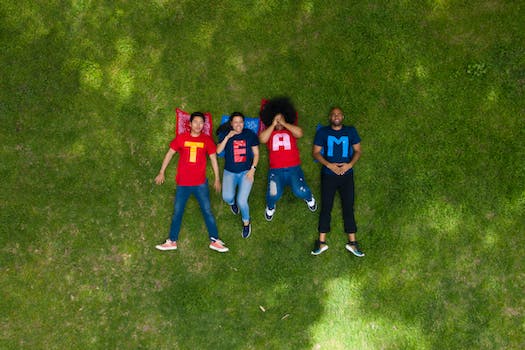In today’s increasingly remote work environment, team building is more important than ever. Building strong relationships and fostering collaboration among remote employees is crucial for maintaining productivity and a positive work culture. This article aims to provide 10 insightful team building questions that can be used to engage remote employees, promote open communication, and strengthen the bonds within your virtual team.
- 1. Importance of Team Building for Remote Employees
- 1.1. Enhancing collaboration and communication
- 1.2. Fostering a sense of belonging and camaraderie
- 1.3. Boosting productivity and motivation
- 1.4. Aligning goals and promoting a shared vision
- 1.5. Mitigating feelings of isolation and loneliness
- 2. Effective Questions to Promote Team Building
- 2.1. What are your preferred methods of communication?
- 2.2. How do you establish trust and build relationships remotely?
- 2.3. What strategies do you use to foster teamwork and collaboration?
- 2.4. How do you ensure everyone feels included and valued?
- 2.5. What activities or tools do you recommend for virtual team building?
- 3. Measuring the Success of Team Building Activities
- 3.1. Monitoring changes in team dynamics and communication patterns
- 3.2. Evaluating employee feedback and satisfaction levels
- 3.3. Assessing the impact on productivity and goal achievement
- 3.4. Tracking improvements in collaboration and problem-solving
- 3.5. Observing enhanced engagement and participation
1. Importance of Team Building for Remote Employees
Team building is an essential aspect for remote employees as it plays a crucial role in fostering collaboration, communication, and trust within the team. Working remotely can often lead to feelings of isolation and disconnect, which can negatively impact productivity and morale. By engaging in team building activities, remote employees can feel more connected to their colleagues, leading to improved teamwork and overall job satisfaction. Additionally, team building allows remote employees to get to know each other on a personal level, which can strengthen relationships and enhance cooperation. It also promotes a sense of belonging and camaraderie, even when working from different locations. Overall, team building is important for remote employees to create a positive work environment and promote a sense of unity and collaboration.
1.1. Enhancing collaboration and communication
Team building is an essential aspect of fostering collaboration and communication among remote employees. In a virtual work environment, where face-to-face interaction is limited, building strong relationships and effective communication channels becomes even more crucial. By investing in team building activities, organizations can enhance the sense of belonging, trust, and camaraderie among remote employees, ultimately leading to improved teamwork and productivity.
Creating opportunities for remote team members to connect and bond is vital for establishing a cohesive and efficient work environment. Team building exercises, both virtual and in-person when possible, allow employees to get to know each other on a personal level, which in turn promotes better collaboration. These activities can include icebreaker games, virtual team challenges, online workshops, or even occasional retreats. By engaging in such activities, remote employees can develop a deeper understanding of each other’s strengths, weaknesses, and working styles, leading to smoother communication and more effective collaboration.
Effective communication is the cornerstone of successful remote teams. Without the luxury of face-to-face interaction, remote employees heavily rely on various communication tools and techniques to stay connected. Team building initiatives provide an opportunity to improve communication skills and establish clear communication channels. Through team-building exercises, remote employees can learn to communicate more effectively, express their ideas, actively listen to others, and provide constructive feedback. By fostering a culture of open and transparent communication, organizations can ensure that remote employees feel valued and heard, leading to increased engagement and satisfaction.
In conclusion, team building plays a significant role in enhancing collaboration and communication among remote employees. By investing in team building activities, organizations can create a strong sense of unity, trust, and effective communication channels within virtual teams. This ultimately leads to improved teamwork, productivity, and overall job satisfaction among remote employees.
1.2. Fostering a sense of belonging and camaraderie
Fostering a sense of belonging and camaraderie among remote employees is crucial for maintaining a positive and productive work environment. When employees feel like they are part of a team and have a strong connection with their colleagues, they are more likely to be motivated, engaged, and committed to their work.
Team building plays a vital role in creating this sense of belonging and camaraderie, especially for remote employees. As they are physically separated from their teammates, remote employees may feel isolated and disconnected from the rest of the team. By actively focusing on team building activities, organizations can cultivate a supportive and inclusive culture that helps remote employees feel valued and connected.
Team building activities can include virtual team building exercises, online games, icebreaker sessions, and regular video conference meetings. These activities provide opportunities for remote employees to interact with each other, build relationships, and develop a sense of trust and camaraderie. Through team building, remote employees can learn more about each other’s strengths, interests, and backgrounds, which can enhance collaboration and communication within the team.
The importance of team building for remote employees cannot be overstated. It not only improves employee morale and job satisfaction but also enhances teamwork, productivity, and overall organizational success. Investing in team building initiatives for remote employees is a wise decision that can result in a more cohesive and engaged remote workforce.
1.3. Boosting productivity and motivation
Boosting productivity and motivation is crucial for remote employees who may face challenges such as feeling isolated or lacking a sense of team collaboration. One effective way to address these issues is through team building activities. Team building plays a significant role in fostering a positive work environment and enhancing employee engagement. It helps remote employees feel connected, motivated, and supported, which in turn boosts their productivity and overall job satisfaction. In this article, we will explore the importance of team building for remote employees and provide 10 team building questions that can be used to facilitate engagement and strengthen virtual teams.
1.5. Mitigating feelings of isolation and loneliness
In today’s digital age, more and more companies are embracing remote work as a means to increase productivity and attract top talent. While remote work offers numerous benefits, such as flexibility and autonomy, it also comes with its challenges. One of the main challenges faced by remote employees is the feeling of isolation and loneliness, which can have a negative impact on their overall well-being and job satisfaction.
Mitigating feelings of isolation and loneliness is crucial for remote employees to ensure their engagement and productivity levels remain high. Here are some strategies that can help:
1. Foster regular communication: Encourage open and frequent communication among team members. Utilize various communication tools such as video conferencing, instant messaging, and project management platforms to keep remote employees connected and engaged.
2. Establish virtual social events: Organize virtual team-building activities, such as online games, virtual happy hours, or virtual coffee breaks. These activities provide an opportunity for remote employees to interact with one another on a more personal level, fostering a sense of camaraderie and belonging.
3. Encourage collaboration: Promote collaboration among remote employees by assigning group projects or tasks that require teamwork. This not only helps foster a sense of belonging but also enhances problem-solving and creativity.
4. Provide emotional support: Remote employees may face unique challenges and stressors. It is important for managers and team leaders to provide emotional support and be empathetic towards their remote team members. Regular check-ins and one-on-one meetings can help address any concerns or issues.
5. Create a virtual community: Establish an online platform or forum where remote employees can connect, share ideas, and support one another. This virtual community can serve as a hub for information sharing, collaboration, and socialization.
By implementing these strategies, companies can effectively mitigate feelings of isolation and loneliness among their remote employees. This, in turn, fosters a positive work environment, enhances team cohesion, and ultimately leads to increased productivity and job satisfaction.
2. Effective Questions to Promote Team Building
As a remote team, building strong relationships and fostering effective communication among team members is crucial. Asking the right questions can help facilitate team building and create a sense of unity and collaboration. Here are some effective questions to promote team building for remote employees:
1. What are your personal goals and how can the team support you in achieving them?
2. How do you prefer to receive feedback and how can we ensure constructive feedback is given and received?
3. What is your preferred communication style and how can we adapt to meet everyone’s needs?
4. How do you handle conflict and what strategies can we implement to resolve conflicts within the team?
5. What are your strengths and how can we leverage them to enhance team performance?
6. What are your areas for improvement and how can we support your growth?
7. How can we encourage knowledge sharing and collaboration among team members?
8. What team activities or initiatives would you like to see implemented?
9. How can we create a supportive and inclusive remote work environment?
10. What are your expectations for team dynamics and how can we ensure everyone feels valued and included?
By asking these questions, remote teams can foster open and honest communication, build trust, and strengthen relationships, ultimately leading to improved team performance and collaboration.
2.1. What are your preferred methods of communication?
In today’s remote work environment, effective communication is crucial for successful team building. Finding the right methods of communication can greatly enhance collaboration, productivity, and overall team cohesion. Here are some preferred methods of communication that can foster effective team building:
1. Video Conferencing: Utilizing platforms like Zoom or Microsoft Teams allows remote employees to connect face-to-face, promoting a sense of belonging and improving non-verbal communication.
2. Instant Messaging: Tools like Slack or Microsoft Teams’ chat feature enable quick and efficient communication, making it easy for team members to ask questions, share updates, or seek clarification.
3. Email: Although considered a more formal method, email can be useful for sharing detailed information, documents, or providing feedback.
4. Project Management Tools: Collaborative platforms like Asana, Trello, or Basecamp provide a centralized space for teams to track progress, assign tasks, and communicate about specific projects.
5. Virtual Team Building Activities: Engaging in virtual team-building activities, such as online games or virtual happy hours, can help foster relationships and strengthen communication among remote employees.
By utilizing these preferred methods of communication, remote teams can effectively build rapport, enhance collaboration, and maintain a sense of unity despite physical distance.
2.2. How do you establish trust and build relationships remotely?
Establishing trust and building relationships remotely can be challenging, but with the right approach, it is definitely possible. Here are some effective questions that can promote team building among remote employees:
1. What are your personal goals and how can the team support you in achieving them?
2. How do you prefer to communicate and collaborate with your colleagues remotely?
3. What do you think are the key strengths and skills that each team member brings to the table?
4. How can we create a sense of camaraderie and connection despite being physically apart?
5. What strategies can we implement to foster open and honest communication within the team?
6. How can we ensure equal participation and engagement from all team members during virtual meetings?
7. What are some team-building activities or initiatives that you would suggest for remote teams?
8. How can we celebrate achievements and milestones as a team, even when we are not physically together?
9. What steps can we take to address any conflicts or misunderstandings that arise within the team remotely?
10. How can we build trust and strengthen relationships by promoting empathy and understanding among team members?
2.3. What strategies do you use to foster teamwork and collaboration?
To foster teamwork and collaboration among remote employees, there are several strategies that can be implemented. Here are some effective questions that can be used to promote team building:
1. What are some ways we can improve communication and collaboration as a remote team?
2. How can we ensure everyone feels included and valued in our virtual meetings and discussions?
3. What are some challenges you have faced while working remotely as a team, and how can we overcome them together?
4. How can we leverage technology to enhance our collaboration and productivity?
5. What are some team-building activities or exercises that we can do virtually?
6. How can we create a sense of camaraderie and trust within our remote team?
7. What role can leaders play in fostering teamwork and collaboration among remote employees?
8. How can we encourage knowledge sharing and continuous learning within our virtual team?
9. What strategies can we implement to celebrate achievements and milestones as a remote team?
10. How can we ensure accountability and commitment to team goals in a remote work environment?
By asking these questions, remote teams can engage in meaningful discussions that promote teamwork, collaboration, and a sense of unity.
2.4. How do you ensure everyone feels included and valued?
In order to ensure that everyone feels included and valued in a remote team, it is important to create a positive and inclusive work environment. Here are some effective questions that can promote team building and make remote employees feel valued:
1. What are your thoughts on our team’s communication methods? Is there anything we can improve?
2. How can we better support each other in achieving our individual and team goals?
3. What strategies do you find helpful for maintaining work-life balance while working remotely?
4. How do you prefer to receive feedback and recognition for your work?
5. What are some ideas you have for team building activities that can be done remotely?
6. How can we ensure that everyone’s voices are heard and that diverse perspectives are valued in our team?
7. Are there any specific challenges or obstacles you are facing as a remote employee that we can help address?
8. How can we foster a sense of community and camaraderie among remote team members?
9. What are some ways we can celebrate achievements and milestones as a remote team?
10. How can we improve the onboarding process for new remote employees to make them feel welcomed and included?
By asking these questions, remote team leaders can actively engage their employees, address any concerns or challenges, and create a work culture where everyone feels included, valued, and motivated to contribute their best.
2.5. What activities or tools do you recommend for virtual team building?
Virtual team building activities and tools are essential for fostering collaboration and camaraderie among remote employees. Here are some recommendations to promote team building in a virtual setting:
1. Icebreaker Games: Start virtual meetings with fun icebreaker games like ‘Two Truths and a Lie’ or ‘Would You Rather?’ to help team members get to know each other better.
2. Virtual Team Lunches: Encourage team members to have virtual lunches together, where they can casually chat and bond over a meal, even if they are miles apart.
3. Online Team-Building Platforms: Utilize online platforms like Slack, Microsoft Teams, or Zoom to create virtual spaces for team members to interact, share ideas, and collaborate on projects.
4. Virtual Team-Building Workshops: Arrange virtual workshops or training sessions focused on team building exercises, leadership development, or communication skills to enhance teamwork and productivity.
5. Virtual Coffee Breaks: Schedule regular virtual coffee breaks where team members can have informal conversations, share stories, or discuss non-work-related topics, just like they would in an office setting.
6. Online Team-Building Games: Engage remote employees in online team-building games like trivia quizzes, virtual escape rooms, or online board games to boost team spirit and create a sense of friendly competition.
7. Virtual Team Challenges: Organize virtual team challenges or competitions, such as fitness challenges, creative contests, or problem-solving tasks that require collaboration and teamwork to complete.
8. Virtual Happy Hours: Plan virtual happy hours where team members can unwind, have casual conversations, play virtual games, or participate in virtual team-building activities while enjoying their favorite beverages.
These activities and tools can help remote teams foster a sense of connection, build trust, and enhance collaboration despite being physically apart.
3. Measuring the Success of Team Building Activities
Measuring the success of team building activities is crucial for remote employees. While these activities are designed to foster collaboration and improve relationships, it is important to evaluate their effectiveness. By asking the right questions, you can gauge the impact of team building initiatives and make necessary improvements. Here are 10 key questions to measure the success of team building activities for remote employees:
1. Did the activity enhance communication among team members?
2. Did the activity promote trust and improve relationships?
3. Did the activity help remote employees feel more connected to their colleagues?
4. Did the activity improve problem-solving skills and encourage creativity?
5. Did the activity foster a sense of camaraderie and team spirit?
6. Did the activity result in increased productivity and motivation?
7. Did the activity address any specific challenges faced by remote employees?
8. Did the activity align with the overall goals and objectives of the team?
9. Did the activity provide opportunities for personal and professional growth?
10. Did the activity leave a lasting impact and create positive change within the team?
By evaluating these aspects, you can assess the effectiveness of team building activities for remote employees and make informed decisions for future initiatives.
3.1. Monitoring changes in team dynamics and communication patterns
Monitoring changes in team dynamics and communication patterns is crucial to measuring the success of team building activities. By observing how team members interact with each other before and after the activities, it becomes possible to assess the impact of these activities on team cohesion and collaboration.
One way to monitor changes in team dynamics is to regularly gather feedback from team members. This can be done through surveys, one-on-one interviews, or group discussions. By asking questions about their perception of team dynamics and communication patterns, it becomes easier to identify any improvements or challenges that may have arisen.
Additionally, tracking communication patterns within the team can provide valuable insights. This can be done by analyzing the frequency and quality of interactions, such as the number of meetings held, the level of engagement during discussions, and the effectiveness of communication tools used.
Furthermore, observing non-verbal cues and body language during team meetings or collaborative tasks can also offer valuable information about the team dynamics. Paying attention to signs of active participation, cooperation, and open communication can indicate a positive shift in team dynamics.
Overall, monitoring changes in team dynamics and communication patterns is essential to evaluate the effectiveness of team building activities. By keeping a close eye on these factors, organizations can identify areas of improvement and make data-driven decisions to enhance team collaboration and productivity.
3.2. Evaluating employee feedback and satisfaction levels
Evaluating employee feedback and satisfaction levels is crucial in measuring the success of team building activities. It allows organizations to gauge the effectiveness of their efforts in improving employee engagement, collaboration, and overall team performance. By collecting and analyzing feedback, companies can identify areas of improvement and make informed decisions for future team building initiatives.
To evaluate employee feedback and satisfaction levels, organizations can utilize various methods. One common approach is through surveys or questionnaires that are distributed to employees after team building activities. These surveys can include questions about the employees’ perceived impact of the activities, their level of satisfaction, and any suggestions for improvement.
Additionally, organizations can conduct focus groups or individual interviews to gather more in-depth feedback. These sessions provide an opportunity for employees to express their thoughts and feelings about the team building activities, enabling a deeper understanding of their experiences.
It is important to consider both quantitative and qualitative data when evaluating employee feedback. Quantitative data, such as numerical ratings or rankings, helps provide a measurable assessment of satisfaction levels. Qualitative data, on the other hand, offers richer insights into employees’ perceptions, emotions, and overall experiences.
By analyzing the collected data, organizations can identify patterns, trends, and areas of strength or weakness in their team building initiatives. This information can then be used to make informed decisions on how to improve future activities and enhance employee satisfaction.
Overall, evaluating employee feedback and satisfaction levels is an essential step in measuring the success of team building activities. It allows organizations to continuously improve their efforts and create a positive and engaging work environment for remote employees.
3.3. Assessing the impact on productivity and goal achievement
Assessing the impact on productivity and goal achievement:
One crucial aspect of team building activities is their impact on productivity and goal achievement. By engaging remote employees in team building exercises, companies aim to enhance their overall performance and achieve their objectives more efficiently. It is essential to evaluate the effectiveness of these activities to determine whether they contribute positively to productivity and goal attainment.
Measuring the Success of Team Building Activities:
To assess the success of team building activities for remote employees, various metrics can be considered. One common measure is the overall improvement in productivity levels. Companies can compare the team’s performance before and after the team building exercises to determine any significant changes. Another metric to consider is the achievement of set goals. By analyzing whether the team has accomplished its objectives within the desired timeframe, the impact of team building activities on goal attainment can be measured.
Additionally, employee feedback and satisfaction surveys can provide valuable insights into the effectiveness of team building activities. By gathering input from remote employees, companies can understand their perception of the activities and whether they believe these activities have positively influenced their productivity and goal achievement.
In conclusion, assessing the impact on productivity and goal achievement is crucial when evaluating the success of team building activities for remote employees. By considering various metrics, such as productivity levels, goal attainment, and employee feedback, companies can determine the effectiveness of these activities and make informed decisions on future initiatives.
3.4. Tracking improvements in collaboration and problem-solving
Tracking improvements in collaboration and problem-solving:
One of the key objectives of team building activities for remote employees is to enhance collaboration and problem-solving skills. It is important to measure the success of these activities to ensure that they are effective in achieving this goal. Tracking improvements in collaboration can be done by monitoring the frequency and quality of communication among team members. This can include tracking the number of virtual meetings held, the level of active participation during these meetings, and the effectiveness of communication channels used (such as video conferencing or chat platforms). Additionally, feedback from team members regarding their experience in working together and solving problems can provide valuable insights into the effectiveness of team building activities.
Measuring the success of team building activities:
Evaluating the success of team building activities is crucial to determine their impact on remote employees’ performance and overall team dynamics. One way to measure success is by conducting surveys or questionnaires before and after the activities. These surveys can assess employees’ perception of their collaboration and problem-solving skills, as well as their satisfaction with the team building activities. Another approach is to analyze performance metrics, such as the completion of collaborative tasks or projects, the time taken to resolve conflicts, and the overall productivity of the team. Additionally, feedback from managers and supervisors regarding observed improvements in teamwork and problem-solving can provide valuable insights into the effectiveness of team building activities. By regularly measuring the success of team building activities, organizations can identify areas for improvement and make informed decisions on future activities to enhance collaboration and problem-solving among remote employees.
3.5. Observing enhanced engagement and participation
Observing enhanced engagement and participation is crucial when it comes to team building activities. Without active involvement and enthusiasm from the team members, the effectiveness of such activities can be limited. By closely monitoring the level of engagement, team leaders can assess the success of team building initiatives and make necessary adjustments.
Measuring the success of team building activities is essential to determine their impact on remote employees. It helps evaluate whether the activities are achieving their intended objectives and whether they are positively influencing team dynamics and collaboration.
To measure the success of team building activities, various metrics can be used. One important metric is the level of participation. This can be measured by tracking the attendance and active involvement of remote employees in the activities. Higher attendance and active participation indicate a higher level of engagement and interest in the team building exercises.
Another metric to consider is the feedback received from remote employees. Collecting feedback through surveys or interviews allows team leaders to gather valuable insights into the employees’ perception of the activities. Positive feedback and constructive suggestions can indicate that the team building activities were successful in fostering a positive team culture and improving communication.
Additionally, the impact on team performance and collaboration can also be measured. This can be done by assessing key performance indicators (KPIs) such as productivity, teamwork, and communication metrics before and after the team building activities. If these KPIs show improvement or positive changes, it indicates that the activities have been successful in enhancing team dynamics and effectiveness.
Overall, measuring the success of team building activities for remote employees is essential to ensure their effectiveness and impact. By observing enhanced engagement and participation, tracking attendance, collecting feedback, and assessing performance metrics, team leaders can gain valuable insights and make informed decisions to continuously improve team building initiatives.
Conclusion
In conclusion, asking team building questions is a great way to foster connection, collaboration, and engagement among remote employees. By encouraging open and honest communication, remote teams can build trust, enhance productivity, and strengthen their overall bond. These 10 team building questions provide a starting point for managers and team leaders to spark meaningful conversations and create a positive remote work culture.






7 Comments
Cathe Fanya
9 months agoGreat article! These effective questions for remote employees are a game-changer in boosting team cohesion and productivity. Communication is key, especially in a remote work setup, and these questions will definitely enhance it. Creating a positive work environment is crucial for motivation and engagement, and I cant wait to implement these strategies with my team. Thank you for sharing!
Ashley Christi
9 months agoThank you for sharing this insightful post on boosting team cohesion and productivity among remote employees. Effective communication is crucial, especially in a virtual work environment, and these questions seem to be excellent tools for achieving that. By encouraging open dialogue and active participation, remote teams can foster a positive work environment where ideas can be freely exchanged and collaboration can thrive. I appreciate the emphasis on team members well-being and ensuring everyone feels supported and valued. Overall, this post offers valuable guidance for remote leaders seeking to enhance team cohesion, productivity, and ultimately, success.
Noellyn Alf
9 months agoHey there, fellow remote workers! 🙌🏼 Lets dive into these magical questions and sprinkle some productivity dust on our team cohesion spell! ✨ Who wouldve thought that a simple question could bring us all closer together? 🤔 So, grab your wands (or keyboards) and lets cast some communication spells that will make our work environment positively enchanting! 💫🪄
Mabelle Monda
9 months agoI found this post on Boost team cohesion and productivity with effective questions for remote employees to be quite insightful and relevant in todays increasingly digital work environment. The suggested questions seem to address key aspects of remote team dynamics and can greatly enhance communication and foster a positive work environment. By encouraging remote employees to reflect on their progress, challenges, and goals, these questions can help create a sense of accountability and encourage proactive problem-solving. Furthermore, the emphasis on promoting open and constructive feedback can contribute to the overall growth and development of both individuals and the team as a whole. Overall, I believe that integrating these effective questions into remote team management strategies can significantly improve team cohesion and productivity.
Andeee Barboza
9 months agoCreating a strong sense of team cohesion and productivity among remote employees is crucial for any organization in todays digital age. Effective communication and fostering a positive work environment are key elements in achieving this goal. By asking the right questions, we can enhance collaboration, understanding, and overall performance within our remote teams. Lets explore these powerful questions together and unlock the full potential of our remote workforce.
Kerrill Fonsie
9 months agoHey there, fellow remote employees! 💻🌍 I stumbled upon this fantastic post that I believe can truly make a difference in our teamwork and productivity levels. 🚀🤝 These effective questions are an absolute game-changer when it comes to boosting team cohesion and communication, even from a distance. 📞💬 Lets embrace this opportunity to foster a positive work environment and bring out the best in each other. 🌟🌈 Together, we can conquer any challenge and achieve greatness! 💪👏
Deedee Keever
9 months agoImplementing effective questioning techniques for remote employees can significantly boost team cohesion and productivity, while also enhancing communication and fostering a positive work environment. By encouraging regular communication through thought-provoking questions, remote workers can feel more engaged and valued within the team. This approach can facilitate knowledge sharing, problem-solving, and overall collaboration among team members, leading to improved outcomes and a stronger sense of camaraderie. Emphasizing the importance of effective questioning is a valuable strategy for remote teams to overcome the challenges of physical distance and create a cohesive and productive work environment.